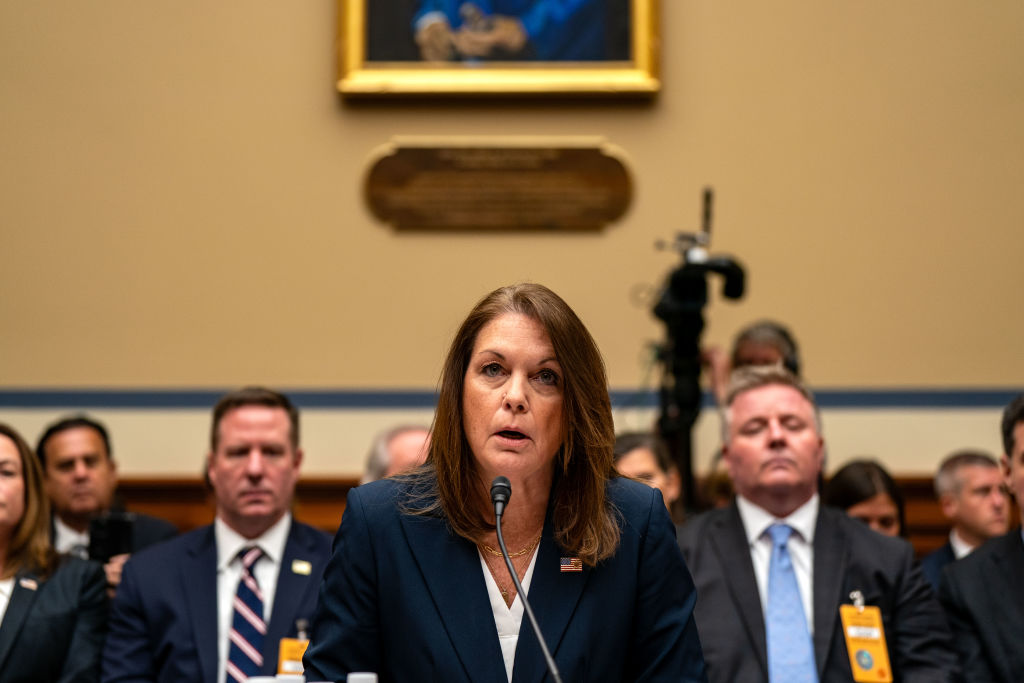Severe storms may pose a threat to solar eclipse viewers
Apr 7, 2024, 8:59 PM

The City of Dripping Springs, Texas is preparing for the solar eclipse with a set of larger than life glasses on display at Veterans Memorial Park on March 5. Millions of people across the United States are preparing to watch April's total solar eclipse. (Suzanne Cordeiro, AFP/Getty Images via CNN Newsource)
(Suzanne Cordeiro, AFP/Getty Images via CNN Newsource)
(CNN) — Excited eclipse watchers, watch out: Weather could complicate attempts to see the epic astronomical phenomenon in parts of the Southwest.
Clouds and storms could hinder the ability to see the eclipse in its full glory in several spots along the path of totality — where the moon will completely block out the sun.
The most ideal weather for the eclipse will likely occur in two general areas: from Vermont through Maine, as well as Missouri through southern Indiana. Only a few isolated clouds are expected for these areas, which should not prevent optimal eclipse viewing. So get your eclipse glasses ready for places like Evansville, Ind.; Carbondale, Ill.; Burlington, Vt.; and Caribou, Maine.
Some of the locations with less-than-ideal weather include portions of the eastern Great Lakes and much of Texas.
Cleveland, Ohio, and Erie, Penn., have a chance of rain mainly in the morning, but scattered cloud cover may be slow to exit the area even after the rain ends. The extent of the cloud cover all hinges on how quickly a warm front advances eastward.
Farther east in Buffalo and Rochester, New York, cloud cover is expected to be between mostly cloudy and overcast — which will limit the viewing of the eclipse pretty significantly.
Then there are the southern cities, which not only have clouds to worry about but also severe storms.
There is a Level 2 of 5 risk for severe weather on Monday, potentially affecting those in the path of totality across much of Texas as well as parts of Oklahoma, Arkansas and Louisiana.
And there is a Level 3 of 5 risk for severe weather just outside of Dallas, Texas – in the path of totality – where thousands of people are expected to be watching the solar eclipse.
The National Weather Service in Dallas is forecasting mostly cloudy skies during the eclipse, with scattered storms starting in the early evening. The severe weather is expected to move into the region after the eclipse, but could be hazardous to those traveling through the area.
“There may only be a short window (1-2 hrs) between the eclipse and strong to severe storms,” according to the National Weather Service in Dallas.
The main threats associated with this system are a few tornadoes, damaging winds, and large to very large hail, according to the Storm Prediction Center.
But even if clouds do roll in ahead of the storms and limit optimal viewing in Texas, they do not completely inhibit the experience.
Different types of clouds obscure more or less of the sun and fill more or less of the sky to varying extents, so the exact combination will change viewers’ experience.
But in general, mostly cloudy skies could block the ability to see eclipse-related phenomena like partial crescent shadows, Baily’s beads or the sun’s corona. Still, despite cloud cover, viewers will be able to experience total darkness on the path of totality.
A total of 32 million people in the US are located within the eclipse’s 115-mile-wide path of totality and will have the chance to see the cosmological marvel.
It’s an opportunity that doesn’t come often: Another total solar eclipse won’t be visible across the contiguous US again until August 2044.
On Monday, viewers will first see a partial eclipse, in which the moon appears to take a “bite” out of the sun, which can last between 70 and 80 minutes, NASA says.
Then, the total solar eclipse will last between 3-and-a-half and 4 minutes for viewers directly in the path of totality, says NASA. Viewers will be able to glimpse the sun’s corona, its ultra-hot outer atmosphere, which emits a glow that can be seen around the moon.













